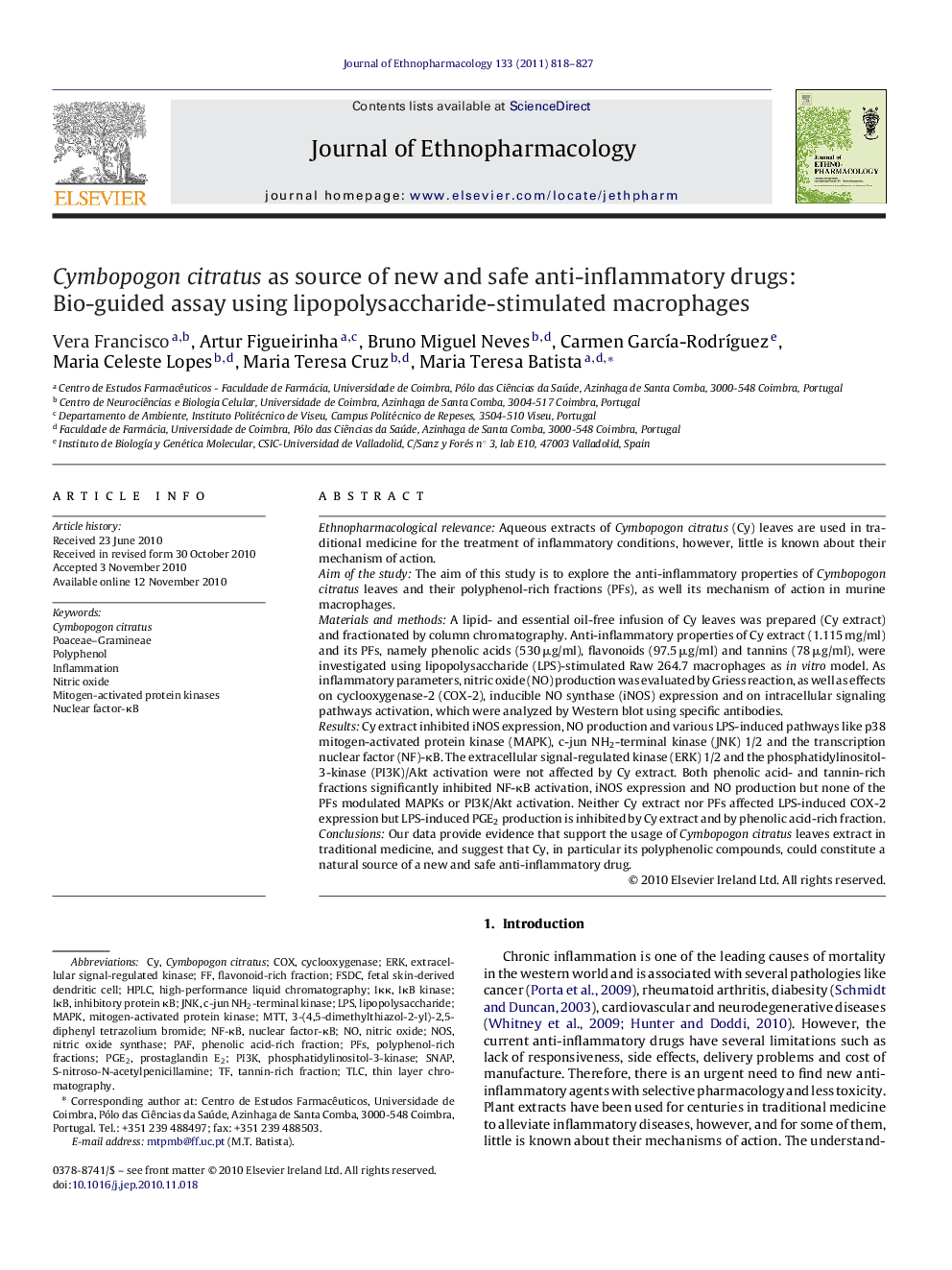| Article ID | Journal | Published Year | Pages | File Type |
|---|---|---|---|---|
| 5840102 | Journal of Ethnopharmacology | 2011 | 10 Pages |
Ethnopharmacological relevanceAqueous extracts of Cymbopogon citratus (Cy) leaves are used in traditional medicine for the treatment of inflammatory conditions, however, little is known about their mechanism of action.Aim of the studyThe aim of this study is to explore the anti-inflammatory properties of Cymbopogon citratus leaves and their polyphenol-rich fractions (PFs), as well its mechanism of action in murine macrophages.Materials and methodsA lipid- and essential oil-free infusion of Cy leaves was prepared (Cy extract) and fractionated by column chromatography. Anti-inflammatory properties of Cy extract (1.115 mg/ml) and its PFs, namely phenolic acids (530 μg/ml), flavonoids (97.5 μg/ml) and tannins (78 μg/ml), were investigated using lipopolysaccharide (LPS)-stimulated Raw 264.7 macrophages as in vitro model. As inflammatory parameters, nitric oxide (NO) production was evaluated by Griess reaction, as well as effects on cyclooxygenase-2 (COX-2), inducible NO synthase (iNOS) expression and on intracellular signaling pathways activation, which were analyzed by Western blot using specific antibodies.ResultsCy extract inhibited iNOS expression, NO production and various LPS-induced pathways like p38 mitogen-activated protein kinase (MAPK), c-jun NH2-terminal kinase (JNK) 1/2 and the transcription nuclear factor (NF)-κB. The extracellular signal-regulated kinase (ERK) 1/2 and the phosphatidylinositol-3-kinase (PI3K)/Akt activation were not affected by Cy extract. Both phenolic acid- and tannin-rich fractions significantly inhibited NF-κB activation, iNOS expression and NO production but none of the PFs modulated MAPKs or PI3K/Akt activation. Neither Cy extract nor PFs affected LPS-induced COX-2 expression but LPS-induced PGE2 production is inhibited by Cy extract and by phenolic acid-rich fraction.ConclusionsOur data provide evidence that support the usage of Cymbopogon citratus leaves extract in traditional medicine, and suggest that Cy, in particular its polyphenolic compounds, could constitute a natural source of a new and safe anti-inflammatory drug.
Graphical abstractDownload high-res image (178KB)Download full-size image
